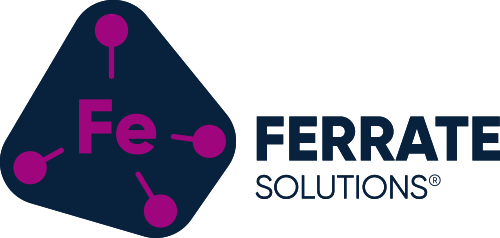Blue Green Algae Everywhere … Summer of our Discontent?
Let’s all Drink to That …
– Dr. Tom Waite, Founder, Ferrate Solutions
Harmful Algal Blooms have sprung up in lakes, rivers and coastal waters across the nation; it looks like the pigeons have come home to roost …. payback for our continued discharge of nutrients into the environment. Perhaps a harbinger of things to come? Treating these discharges to remove the nutrients is doable and affordable, and it’s about time to focus our resources on treatment and clean-up …. Not more monitoring.
A couple of articles caught my attention this week. The first article:
Melbourne to test water system
Apparently algal (and Cyanobacterial) blooms have impacted the water supply of this coastal Florida suburb, and the natives are up in arms over the foul taste and odor of the drinking water. According to the article, they are also concerned about possible toxins in the water due to the blue green algae. After some town meetings (and comforting assurances by treatment plant personnel) The city committed to ….. extensive monitoring of the distribution system…. According to the article: “The tests will include coliform/E.coli bacteria, calcium, alkalinity, chlorine residual, pH, temperature and specific conductivity”. One might ask what these parameters have to do with blue green algae and toxins?
In fairness to all, summers everywhere bring water problems to drinking water providers. Excessive plant growth in water supplies, releases organics (some toxic) causing, at least, taste and odor problems. Drinking water plants struggle to provide high quality product during these periods, as their tools are (were) limited. Unfortunately, these challenges are getting more common and more dangerous.
Old tools for a worsening problem …. Drinking water treatment plants are inflexible in their ability to treat changing water quality in the source water. They are designed and built to effectively treat a water source. Most plants were built many years ago, and few have been upgraded to handle the rapidly changing quality of their water supply, especially when the changes are seasonal. Typical treatment plants utilize an oxidant/disinfectant (usually chlorine) and media filtration, but some may also employ coagulation, absorption, or membrane systems, depending on the quality of water being treated. These added unit processes are expensive (both to buy and operate), so it is not cost effective to have them operating or sitting idle when not needed, just to handle a seasonal water quality change. Only surface water supplies are affected by blue green algae. So most drinking water plants are left to struggle during periods when plant productivity is high, because they only have one or two unit operations to work with.
How to handle blue green algae with old tools …. Chlorine to the rescue!..? The only way to handle increased organic matter (including toxins) is to oxidize them (break them up into smaller non-toxic compounds). Chlorine (the all-purpose cleaner) is used and it is effective against most algal/bacterial toxins, if dosed at a high enough level. The usual problem however, is that it makes smelly (odor) water. The major problem is that chlorine combines with some of the algal-produced organic matter, to form “chlorinated organics” ….. many of which are carcinogenic and are regulated by the EPA. So, drinking water plants are caught in tight box; with only chlorine as a tool, they can have blue green algae toxins, or violate carcinogenic compounds regulations.
So, we need new tools ASAP … which brings me to the second article that caught my eye. It was a recent study about a new tool to handle these problems … Ferrate
Addressing harmful algal blooms (HABs) impacts with ferrate(VI): Simultaneous removal of algal cells and toxins for drinking water treatment.
“We herein reported ferrate(VI) as an emerging agent for simultaneous and effective removal of algal cells and toxins in a simulated HAB-impacted water. Ferrate(VI)-driven oxidation enabled algal cell inactivation and toxin decomposition. Subsequently, Fe(III) from ferrate(VI) reduction initiated an in-situ coagulation for cell aggregation.”
In non-scientific jargon, research has clearly shown that Ferrate when added as a pre-treatment in a drinking water plant would simultaneously remove algal cells and destroy dissolved toxins before the chlorination step (for disinfection and residuals). This would eliminate the formation of chlorinated DBPs, while adding only a minimal cost to the treatment system. Because it is a chemical-based system, it could be shut off when not needed, saving chemical costs.
Ferrate can be used to safely and affordably treat stormwater runoff to remove nutrients before they become forever stored in our water systems. Ferrate can also be used to pre-treat drinking water which will greatly reduce the amount of chlorine needed and offer flexibility for treating different contaminants under changing conditions.
So, we have a new tool in our toolbox, let’s use it.

0 Comments